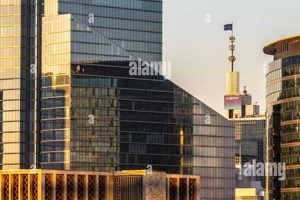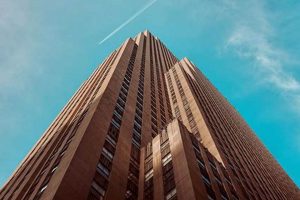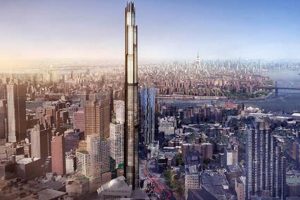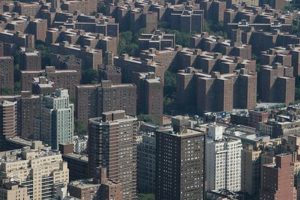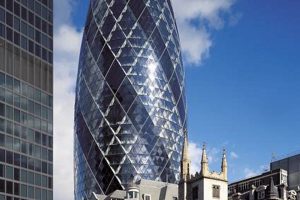Skyscrapers in Japan are among the tallest and most architecturally advanced in the world, with many iconic structures located in major cities such as Tokyo, Osaka, and Nagoya. Constructed using state-of-the-art engineering techniques and boasting cutting-edge designs, these skyscrapers serve as symbols of Japan’s economic prowess and technological innovation.
The importance of skyscrapers in Japan extends beyond their impressive height and aesthetics. They play a crucial role in accommodating the country’s dense population, providing ample space for residential, commercial, and business activities. Moreover, skyscrapers contribute to urban planning by creating vertical communities that reduce urban sprawl and promote efficient land use.
This article explores various aspects of skyscrapers in Japan, including their architectural marvels, engineering feats, and the impact they have on the country’s urban landscape. We will delve into the history of skyscraper development in Japan, showcasing iconic structures and discussing the innovative technologies that have shaped their designs.
1. Height
The remarkable height of skyscrapers in Japan is a defining characteristic that sets them apart from many other structures worldwide. This pursuit of height is driven by several factors, including the country’s limited land area and the desire to create iconic landmarks. Building upwards allows Japan to accommodate a large population and its extensive commercial and business activities within a relatively small geographical footprint.
The construction of tall skyscrapers also aligns with Japan’s technological advancements and engineering prowess. Japanese architects and engineers have developed innovative techniques to withstand frequent seismic activity and other natural disasters, ensuring the safety and integrity of these towering structures. Moreover, the pursuit of height has led to the development of new materials and construction methods, contributing to the advancement of the construction industry.
The height of Japan’s skyscrapers has practical and symbolic significance. These structures provide ample space for various functions, including residential, commercial, and retail, creating vibrant vertical communities. They also serve as landmarks, representing Japan’s economic power and technological achievements. The iconic Tokyo Skytree, for example, is not only the tallest structure in Japan but also a popular tourist destination and a symbol of Tokyo’s modernity.
2. Design
The design of Japanese skyscrapers is a unique blend of tradition and modernity, reflecting Japan’s rich cultural heritage and its embrace of contemporary architectural trends. This fusion creates visually striking structures that are both respectful of the past and forward-looking.
- Traditional Influences
Japanese skyscrapers often incorporate elements of traditional Japanese architecture, such as the use of natural materials like wood and stone, and design elements like sliding doors and tatami flooring. These elements add a sense of cultural identity to the buildings and create a connection to Japan’s architectural past. - Modern Innovations
Despite their traditional influences, Japanese skyscrapers are also showcases for modern architectural innovation. They employ cutting-edge construction techniques, sustainable materials, and energy-efficient designs. This blend of tradition and modernity results in structures that are both visually appealing and environmentally conscious. - Functionality and Aesthetics
Japanese skyscrapers are designed with a focus on both functionality and aesthetics. They are built to withstand Japan’s frequent earthquakes and typhoons, while also providing comfortable and efficient living and working spaces. The buildings’ designs often incorporate natural light and ventilation, as well as public spaces and amenities that enhance the overall user experience. - Cultural Significance
The design of Japanese skyscrapers is not just about aesthetics; it also carries cultural significance. These buildings are often seen as symbols of Japan’s economic power and technological advancements. They represent the country’s commitment to innovation and its ability to blend tradition with modernity.
In conclusion, the design of Japanese skyscrapers is an intriguing fusion of traditional elements and modern architectural styles. This unique approach creates visually stunning structures that are both respectful of the past and forward-looking, reflecting Japan’s rich cultural heritage and its embrace of innovation.
3. Engineering
Engineering plays a crucial role in the construction of Japanese skyscrapers. Advanced engineering techniques are essential to ensure that these towering structures can withstand the frequent seismic activity and other natural disasters that Japan is prone to. Earthquakes and typhoons are common occurrences in Japan, and buildings must be designed to withstand these forces without collapsing or causing significant damage.
Japanese engineers have developed innovative techniques to make skyscrapers earthquake-resistant. These techniques include using base isolation systems, which involve placing the building on a foundation that can move independently of the ground during an earthquake. Another technique is to use energy-absorbing materials in the building’s structure, which can help to dissipate the energy of an earthquake and reduce the impact on the building.
In addition to earthquakes, Japan is also subject to typhoons. These storms can bring high winds and heavy rain, which can damage buildings and infrastructure. Skyscrapers in Japan are designed to withstand these forces by using strong materials and reinforced construction methods. They are also often equipped with wind turbines and other systems to help reduce the impact of wind.
The advanced engineering techniques used in the construction of Japanese skyscrapers are essential to ensuring the safety of the people who live and work in these buildings. These techniques have been developed over many years of research and experience, and they have helped to make Japan one of the world leaders in earthquake-resistant construction.
4. Sustainability
The drive towards sustainability has become an integral aspect of modern skyscraper design in Japan. Architects and engineers are increasingly incorporating eco-friendly features into these tow
ering structures, promoting energy efficiency and reducing their environmental impact. This focus on sustainability aligns with Japan’s long-standing commitment to environmental conservation and its goal of becoming carbon neutral by 2050.
One notable example of sustainable skyscraper design in Japan is the Tokyo Skytree. Completed in 2012, this iconic structure boasts several eco-friendly features. Its exterior lighting system uses energy-efficient LEDs, and the building’s ventilation system incorporates natural airflow to reduce energy consumption. Additionally, the Skytree’s rainwater harvesting system collects and reuses rainwater for various purposes, such as irrigation and flushing toilets.
Another example is the Sumitomo Mitsui Banking Corporation Headquarters Building in Tokyo. This 52-story skyscraper features a double-skin facade that helps regulate indoor temperatures and reduce energy consumption. The building also utilizes a geothermal heat exchange system that harnesses the Earth’s natural heat to provide heating and cooling.
The incorporation of sustainable features in Japanese skyscrapers has several practical benefits. These features can help reduce operating costs by lowering energy consumption and water usage. They can also improve indoor environmental quality, creating healthier and more comfortable spaces for occupants. Furthermore, sustainable skyscrapers contribute to the broader goal of mitigating climate change by reducing greenhouse gas emissions.
In conclusion, the connection between sustainability and Japanese skyscrapers is a testament to Japan’s commitment to environmental stewardship and innovation. By incorporating eco-friendly features into these towering structures, architects and engineers are not only creating visually striking landmarks but also contributing to a more sustainable and resilient built environment.
5. Mixed-use
The incorporation of mixed-use spaces in Japanese skyscrapers is a defining characteristic that sets them apart from many other skyscrapers worldwide. This design approach combines residential, commercial, and retail spaces within a single building, creating vibrant vertical communities where people can live, work, and shop in close proximity.
There are several reasons why mixed-use skyscrapers have become so popular in Japan. One reason is that they make efficient use of space, which is a valuable commodity in densely populated urban areas. By combining different functions within a single building, mixed-use skyscrapers can reduce urban sprawl and promote more compact city development.
Another reason for the popularity of mixed-use skyscrapers in Japan is that they offer a convenient and efficient lifestyle for residents. With residential units, commercial offices, and retail stores all located within the same building, residents can easily access a wide range of amenities without having to travel long distances.
One notable example of a mixed-use skyscraper in Japan is the Roppongi Hills Mori Tower in Tokyo. This 54-story skyscraper includes residential units, offices, a hotel, a shopping mall, and a museum. The tower is a popular destination for both residents and tourists, and it has helped to revitalize the Roppongi district.
The connection between mixed-use skyscrapers and the broader concept of “japan skyscraper” is significant. Mixed-use skyscrapers are a key component of modern Japanese architecture, and they reflect the country’s commitment to innovation, sustainability, and efficient land use.
6. Cultural significance
Japanese skyscrapers are not just towering structures; they are also cultural icons that embody the country’s economic prowess and architectural ingenuity. These skyscrapers have become symbols of Japan’s modernity and progress, and they have played a significant role in shaping the country’s urban landscape.
- Symbols of Economic Power
Japanese skyscrapers are often seen as symbols of the country’s economic power. The height and grandeur of these structures reflect Japan’s status as one of the world’s leading economies. Skyscrapers such as the Tokyo Skytree and the Abeno Harukas have become landmarks that represent Japan’s economic success and its ability to compete on a global scale. - Architectural Innovations
Japanese skyscrapers are also showcases for architectural innovation. Japanese architects have pushed the boundaries of design and engineering to create some of the world’s most iconic and technologically advanced skyscrapers. These buildings incorporate cutting-edge materials, sustainable features, and innovative structural systems, making them not only visually striking but also environmentally conscious and earthquake-resistant. - Cultural Identity
Japanese skyscrapers also play a role in shaping Japan’s cultural identity. These buildings are often designed with traditional Japanese elements, such as sloping roofs and wooden facades, which help to connect them to the country’s rich architectural heritage. At the same time, skyscrapers also represent Japan’s embrace of modernity and its willingness to look to the future. - Tourism and Cultural Exchange
Japanese skyscrapers are popular tourist destinations, attracting visitors from around the world. These buildings offer breathtaking views of the city and provide a unique insight into Japanese culture and architecture. Skyscrapers such as the Tokyo Skytree have become must-see destinations for tourists, and they have helped to promote cultural exchange between Japan and other countries.
In conclusion, the cultural significance of Japanese skyscrapers is multifaceted. These buildings are symbols of economic power, architectural innovation, cultural identity, and tourism. They represent Japan’s commitment to progress and modernity, while also honoring its traditional heritage. As iconic landmarks, Japanese skyscrapers continue to shape the country’s urban landscape and play a vital role in its cultural identity.
7. Urban planning
Japanese skyscrapers play a crucial role in promoting efficient land use and sustainable city development. In densely populated urban areas, skyscrapers allow for the concentration of people and activities in vertical spaces, reducing the need for urban sprawl and preserving valuable land resources. This compact development pattern helps mitigate the negative environmental impacts associated with urban sprawl, such as increased traffic congestion, air pollution, and habitat loss.
For example, the Tokyo Metropolitan Government Building, one of the first skyscrapers in Japan, was constructed in 1991 to consolidate several government offices into a single high-rise structure. This vertical consolidation freed up valuable land in the city center for other uses, such as parks and green spaces, while improving accessibility and reducing commuting times for government employees.
Furthermore, skyscrapers contribute to sustainable city development by incorporating green building technologies and promoting energy efficiency. Many Japanese skyscrapers are equipped with solar panels, rainwater harvesting systems, and other eco-friendly features that reduce
their environmental footprint and contribute to the city’s overall sustainability goals.
In conclusion, the connection between urban planning and Japanese skyscrapers is significant. Skyscrapers not only provide efficient land use solutions but also contribute to sustainable city development by reducing urban sprawl, promoting energy efficiency, and incorporating green building technologies. This understanding highlights the importance of skyscrapers as key components of sustainable and livable urban environments.
8. Economic hubs
Skyscrapers in Japan are not just architectural marvels; they are also economic powerhouses that house major corporations and businesses, serving as centers of economic activity and driving the country’s economic growth and prosperity.
- Centralized Business Districts
Japanese skyscrapers are often concentrated in central business districts, creating vibrant and dynamic economic hubs. These districts attract businesses from various industries, including finance, technology, and manufacturing, fostering collaboration and innovation. A notable example is the Shinjuku district in Tokyo, home to numerous skyscrapers housing corporate headquarters and financial institutions. - Vertical Business Communities
Skyscrapers provide vertical space for businesses to operate and interact, creating cohesive business communities within a single structure. This vertical integration allows for efficient networking, knowledge sharing, and resource pooling, contributing to the success and competitiveness of the businesses housed within. - Global Business Centers
Major Japanese cities like Tokyo and Osaka have emerged as global business centers, attracting multinational corporations and international organizations. Skyscrapers in these cities provide a prestigious and convenient base for these businesses, offering access to a highly skilled workforce, advanced infrastructure, and a globalized business environment. - Economic Impact
The concentration of businesses in skyscrapers generates significant economic benefits for Japan. These businesses create employment opportunities, contribute to tax revenue, and stimulate economic growth in surrounding areas. Moreover, skyscrapers serve as symbols of economic strength and stability, attracting foreign investment and fostering a positive business climate.
In conclusion, the connection between Japanese skyscrapers and their role as economic hubs is inseparable. Skyscrapers provide a vertical canvas for businesses to thrive, fostering collaboration, innovation, and economic growth. Their presence in major cities transforms them into global business centers, attracting international investment and strengthening Japan’s position in the global economy.
9. Tourism
The connection between “Tourism: Unique skyscrapers attract tourists from around the world, showcasing Japan’s architectural prowess” and “japan skyscraper” lies in the significant role that skyscrapers play in boosting tourism and highlighting Japan’s architectural achievements. These skyscrapers, with their distinctive designs and cutting-edge engineering, have become iconic landmarks that draw visitors from far and wide.
One prominent example is the Tokyo Skytree, the tallest structure in Japan and a popular tourist destination. Its observation deck offers breathtaking panoramic views of Tokyo, showcasing the city’s vast skyline and architectural diversity. Visitors are captivated by the Skytree’s innovative design, which incorporates traditional Japanese elements with modern engineering techniques.
Another notable example is the Abeno Harukas in Osaka, the tallest skyscraper in Japan outside of Tokyo. Its observation deck, known as the “Harukas 300,” provides stunning views of Osaka and its surrounding areas. The building’s unique design, featuring a sloping roof and a glass facade, has made it an architectural marvel that attracts tourists and architecture enthusiasts alike.
The connection between tourism and Japanese skyscrapers goes beyond individual landmarks. These skyscrapers have collectively transformed Japan into a global hub for architectural tourism. Visitors come to Japan specifically to witness the country’s architectural prowess, and skyscrapers play a central role in this experience. The opportunity to visit and explore these architectural wonders contributes to Japan’s tourism industry and its reputation as a leader in innovative and awe-inspiring design.
FAQs on Japanese Skyscrapers
This section addresses frequently asked questions regarding Japanese skyscrapers, providing informative answers to common concerns and misconceptions.
Question 1: What are the tallest skyscrapers in Japan?
Answer: As of 2023, the tallest skyscraper in Japan is the Tokyo Skytree, standing at 634 meters (2,080 feet). Other notable skyscrapers include the Abeno Harukas in Osaka (300 meters or 984 feet) and the Yokohama Landmark Tower (296 meters or 971 feet).
Question 2: Are Japanese skyscrapers designed to withstand earthquakes?
Answer: Yes, Japanese skyscrapers are renowned for their earthquake-resistant designs. Advanced engineering techniques are employed, such as base isolation systems and energy-absorbing materials, to minimize the impact of seismic activity on these structures.
Question 3: How do Japanese skyscrapers incorporate sustainability?
Answer: Many Japanese skyscrapers prioritize sustainability through the use of eco-friendly features. These include energy-efficient lighting systems, rainwater harvesting systems, and double-skin facades that regulate indoor temperatures, reducing energy consumption and promoting environmental consciousness.
Question 4: What is the cultural significance of skyscrapers in Japan?
Answer: Japanese skyscrapers hold cultural significance as symbols of economic power, architectural innovation, and modernity. They represent the country’s commitment to progress and its embrace of contemporary design while incorporating traditional Japanese elements.
Question 5: How do skyscrapers contribute to urban planning in Japan?
Answer: Skyscrapers play a crucial role in efficient land use within densely populated urban areas. By concentrating people and activities vertically, they reduce urban sprawl and preserve valuable land resources. Additionally, skyscrapers promote sustainable city development through green building technologies and energy-saving measures.
Question 6: Why are Japanese skyscrapers popular tourist destinations?
Answer: Japanese skyscrapers attract tourists worldwide due to their unique designs, cutting-edge engineering, and breathtaking views. They have become iconic landmarks that showcase Japan’s architectural prowess and innovative spirit.
Summary: Japanese skyscrapers are remarkable structures that embody architectural innovation, engineering excellence, and cultural significance. Their contributions to urban planning, sustainability, and tourism highlight their multifaceted importance within Japan and beyond.
Tips Related to “Japan Skyscraper”
This section provides valuable tips and insights related to Japanese skyscrapers, offering practical guidance and enriching your unders
tanding of these architectural marvels.
Tip 1: Explore skyscraper observation decks for panoramic views. Many Japanese skyscrapers feature observation decks that offer breathtaking panoramic views of the city and surrounding areas. Take advantage of these opportunities to capture stunning photographs and gain a new perspective on Japan’s urban landscapes.
Tip 2: Visit during off-peak hours to avoid crowds. If you wish to enjoy the observation decks without large crowds, consider visiting during off-peak hours, such as early mornings or weekdays, to fully appreciate the views and architectural details.
Tip 3: Learn about the architectural and engineering feats. Japanese skyscrapers are renowned for their innovative designs and advanced engineering techniques. Take time to learn about the unique features and construction methods employed in these structures, gaining a deeper appreciation for their architectural significance.
Tip 4: Check for special events or exhibitions. Some skyscrapers host special events or exhibitions that provide exclusive access to certain areas or offer insights into their design and construction. Stay informed about these events to enhance your visit.
Tip 5: Consider guided tours for in-depth knowledge. Guided tours led by knowledgeable experts can offer valuable insights into the history, design, and engineering aspects of Japanese skyscrapers. These tours provide a deeper understanding and appreciation for these architectural wonders.
Summary: By incorporating these tips into your exploration of Japanese skyscrapers, you can maximize your experience, gain a deeper understanding of their architectural significance, and create lasting memories of these iconic structures.
Conclusion on Japanese Skyscrapers
Skyscrapers in Japan represent architectural marvels that embody innovation, engineering prowess, and cultural significance. They are testaments to Japan’s commitment to progress and modernity, while also preserving traditional elements in their designs. These skyscrapers contribute to efficient land use and sustainable city development, making them integral components of Japan’s urban landscape.
The exploration of Japanese skyscrapers in this article highlights their multifaceted importance, encompassing economic hubs, tourist attractions, and showcases of architectural achievements. Understanding these aspects enhances appreciation for the ingenuity and engineering excellence behind these towering structures. As Japan continues to push the boundaries of architectural design and construction, its skyscrapers will undoubtedly remain symbols of the country’s technological advancements and cultural identity.


